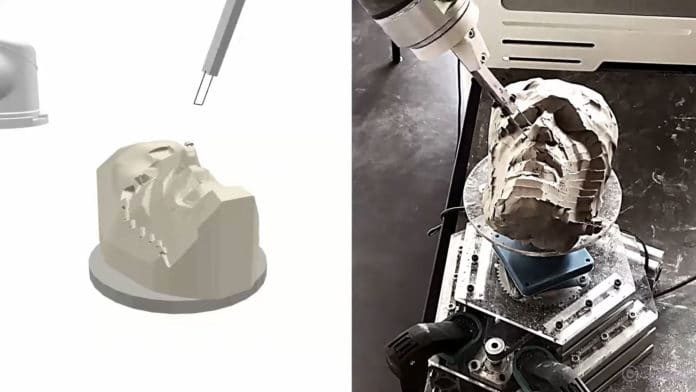Robots might have already taken over many jobs, which until then were only done by humans. But when it comes to more creative endeavors, like the arts, humans still hold a strong lead. There are robotic fabrication techniques such as 3D printing that enable you to make a copy of a wide variety of items, but actually sculpting something out of clay still remains a largely human pursuit.
Now, a team of engineers from ETH Zurich and Disney Research has developed RobotSculptor, an interactive design system that allows users to create sculpting styles and fabricate clay models using a robot arm. They have created an algorithm that allows robots to work with clay and carve sculptures of a given shape from it – on its own.

RobotSculptor receives a 3D model and uses a standard 6-axis robotic arm with a custom sculpting tool on end, which in turn is controlled by a software system that allows an artist to first upload a 3D model that the robot will eventually recreate in clay. The system then defines the overall look of the final sculpture and how the robot should go about creating it in terms of the motions of the tool and the carving techniques it will use. Finally, the software processes the 3D model and the artists’ defined parameters to accurately reproduce the model in the desired sculpting style.
After defining the overall look of the final sculpture and how the robot should create it in terms of the tool movements and the carving techniques it will use, the RobotSculptor begins the job, as shown in the video below. An article on development was presented at SCF 2020 and is available on the Disney Research website.
In addition to putting sculptors out of work, there are some potential practical applications of this research. Rapid prototyping is slowly being taken over by 3D printing and similar tools, but many companies have yet to start with a clay sculpture of a particular object to get an idea of what it will look like in real life. The advantage of a robot is that it can automate this process and more accurately turn a 3D model on a computer screen into a real-world representation made of clay.
RobotSculptor could even be used to create copies of famous sculptures or even new works in the style of famous sculptors as long as a human artist is talented enough with 3D modeling software since the machines are not yet fully autonomous.
